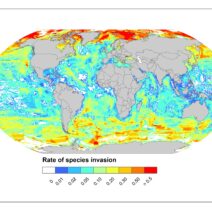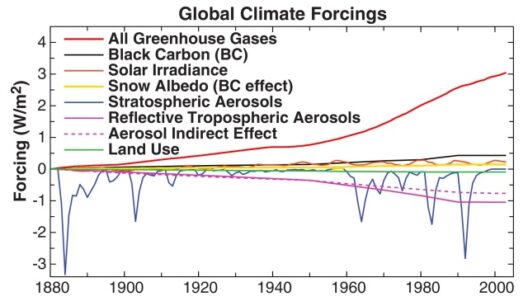In recent years, the discourse surrounding climate change has intensified, sparking a critical examination of the scientific models that project future warming scenarios. Climate models are sophisticated mathematical representations of the Earth’s climate system, attempting to predict the trajectory of global warming based on a multitude of factors, including greenhouse gas emissions, solar radiation, and oceanic currents. Consequently, the question arises: Can we trust climate models on global warming?
To address this question, it is imperative to first understand the different classes of climate models and their functionalities. Broadly, models can be categorized into three types: energy balance models, simple climate models, and comprehensive general circulation models (GCMs). Energy balance models provide a rudimentary framework, considering the equilibrium between incoming solar radiation and outgoing terrestrial radiation. While they offer insights into the overall energy dynamics, their simplistic nature limits their applicability for detailed projections.
In contrast, simple climate models delve deeper into the atmospheric and oceanic interactions. They facilitate estimations of temperature changes based on varying levels of atmospheric CO2, yet they still lack the complexity needed for localized projections. Then we have GCMs, which exemplify the pinnacle of climate modeling endeavors. These models simulate the physics of the atmosphere, oceans, and land surfaces, thereby enabling forecasts that consider diverse climate processes and feedback mechanisms. Due to their intricate algorithms and extensive datasets, GCMs are instrumental in informing policy decisions globally.
One principal argument in favor of the credibility of climate models lies in their historical accuracy. Numerous studies have validated model predictions against observed temperature changes over decades. For instance, numerous GCMs projected an increase in average global temperatures that align closely with empirical data. Such congruence bolsters confidence in their reliability. Moreover, consistent results across various independent models augment this perspective, establishing a robust framework for understanding future climatic shifts.
However, this confidence is not without caveats. Critics often spotlight the inherent uncertainties embedded within climate models, stemming from both the limitations of the data and the assumptions made. One pivotal aspect is the uncertainty in future emissions trajectories. Models rely on scenarios, such as Shared Socioeconomic Pathways, that hypothesize potential pathways for demographic and economic development, leading to various emissions outcomes. The unpredictable nature of human behavior further compounds this uncertainty, presenting a substantial challenge in projections beyond a few decades.
Additionally, the complexity of climate systems introduces further elements of unpredictability. Feedback loops, such as those involving ice melt or changes in cloud cover, can significantly alter climate dynamics. For instance, the albedo effect—whereby less reflective surfaces absorb more solar energy—can amplify warming effects. Such nonlinear interactions are often challenging to encapsulate in models, leading to potential oversimplifications in how climate responses are depicted.
Nonetheless, advancements in technology and methodologies are progressively enhancing the precision of climate models. The advent of high-performance computing has enabled scientists to run a multitude of simulations, refining their models to accommodate a wider array of variables and interactions. Furthermore, updated observational data from satellite imagery and ground measurements provide improved input parameters, which subsequently feed into models. As a result, the fidelity of projections has markedly improved, particularly regarding regional climate patterns.
Moreover, an essential discourse surrounds the transparency and accessibility of climate modeling. The scientific community remains committed to openly sharing methodologies and findings, fostering collaboration across institutions worldwide. This ethos underpins model intercomparisons and public peer review processes, allowing for robust scrutiny and refinement. The open-source nature of many climate models has further democratized access to climate science, enabling enhanced public understanding and engagement on climate issues.
In navigating the question of trust, it is vital to consider the role of climate models in informing policy and societal responses to global warming. Policymakers rely on model projections to formulate strategies for mitigation and adaptation. For instance, predictions regarding sea-level rise are crucial for coastal planning and infrastructure investments. The urgency of the climate crisis mandates that decisions are based on the best available science, even amidst uncertainties. Thus, a transparent and informed approach to interpreting model outputs is essential, enabling stakeholders to weigh risks and take appropriate action.
Furthermore, education plays a crucial role in enhancing public understanding of climate models. Many individuals remain unaware of the intricacies of climate science, which perpetuates misinformation and skepticism. By promoting climate literacy, societies can empower citizens to engage with scientific discourse and advocate for evidence-based policies. This engagement is pivotal in galvanizing collective action against climate change, nurturing a sense of responsibility toward future generations.
In conclusion, while climate models possess uncertainties that warrant scrutiny, their fundamental value in understanding the dynamics of global warming cannot be overstated. The historical accuracy, ongoing technological advancements, and commitment to transparency reflect a growing confidence in their utility. Acknowledging the limitations of these models is prudent, but it should not overshadow their critical role in shaping a sustainable future. Trust in climate models is predicated on informed engagement, rigorous scientific discourse, and a collective resolve to address the multifaceted challenges posed by climate change.




